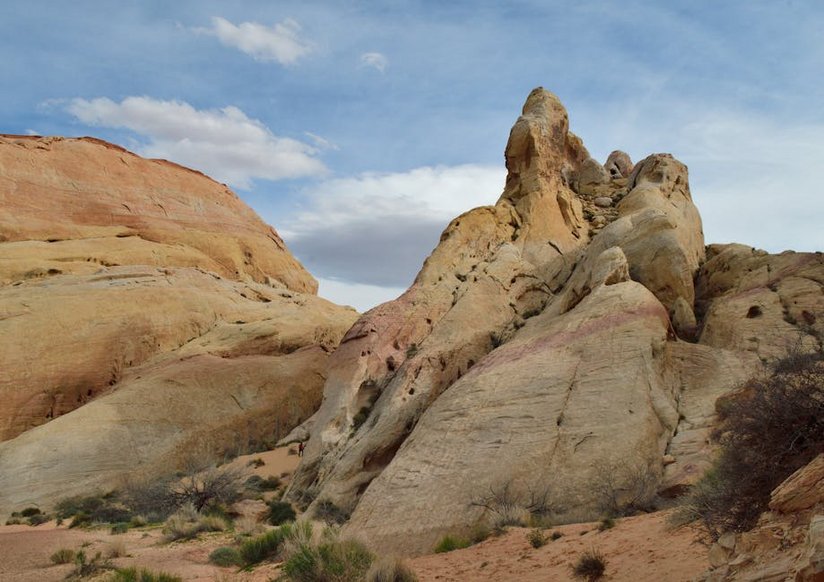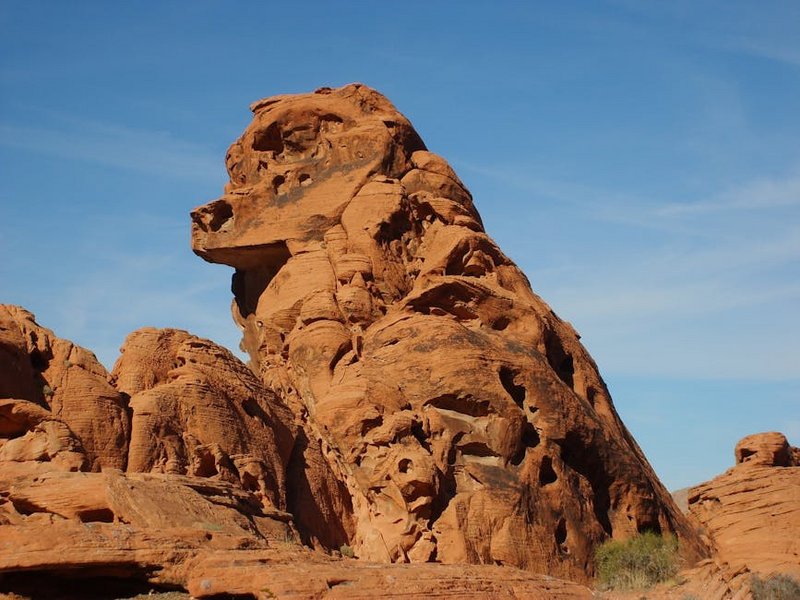Nevada Valley of Fire State Park: Your Ultimate Travel Guide
Welcome to Nevada Valley of Fire State Park, a breathtaking desert oasis that will leave you in awe with its vibrant red Aztec sandstone formations, ancient petroglyphs, and stunning geological wonders. Located just an hour from Las Vegas, this 40,000-acre park offers a perfect escape into nature’s artistry, where you can explore winding canyons, discover hidden arches, and witness spectacular sunsets that paint the sky in fiery hues. Whether you’re an avid hiker, a photography enthusiast, or simply seeking tranquility away from the city buzz, Nevada Valley of Fire State Park delivers an unforgettable adventure. The park’s unique landscape, shaped by wind and water over 150 million years, provides endless opportunities for exploration and relaxation. You’ll find yourself captivated by the contrast of red rocks against blue skies, making every moment picture-perfect. From family-friendly trails to challenging backcountry routes, there’s something for every type of traveler. Prepare to be amazed by the natural beauty and rich history that make this destination a must-visit on any Nevada itinerary.
Nevada Valley of Fire State Park Essential Information – What You Need to Know
Before you embark on your journey to Nevada Valley of Fire State Park, it’s crucial to understand the basics that will enhance your experience. The park is open year-round from sunrise to sunset, with visitor centers offering maps and expert advice. Entrance fees are reasonable, typically around $10 per vehicle for Nevada residents and $15 for non-residents, making it an affordable day trip or overnight adventure. The climate is典型的 desert environment, with hot summers and mild winters, so planning accordingly is key. You’ll find well-maintained roads, picnic areas, and restrooms throughout the park, ensuring comfort during your visit. The park’s elevation ranges from 2,000 to 3,000 feet, which can affect temperature and hiking difficulty. Always check weather conditions before heading out, as sudden changes can occur. With proper preparation, your trip to Nevada Valley of Fire State Park will be smooth and enjoyable, allowing you to focus on the stunning scenery and unique activities available.
Park History and Geological Significance – What You Need to Know
- The park was established in 1935 as Nevada’s first state park, preserving ancient Native American sites and unique rock formations that date back to the Jurassic period.
- Key geological features include the Aztec Sandstone, which formed from shifting sand dunes over millions of years, creating the vibrant red and orange colors visible today.
- Archaeological sites within the park contain petroglyphs from the Ancestral Puebloans, offering a glimpse into the area’s rich cultural heritage that spans thousands of years.
- Budget option: Focus on day trips with packed lunches, free ranger programs, and camping at $20 per night, keeping total costs under $50 per person for a full day.
- Mid-range option: Include guided tours starting at $75 per person, meals at local diners, and lodging in Overton motels averaging $100 per night, totaling around $200 for a weekend trip.
- Luxury option: Opt for private guided hikes at $150+ per person, fine dining in Las Vegas, and upscale resorts nearby costing $250+ per night, with budgets exceeding $500 for a multi-day experience.
- Nevada State Parks Official Valley of Fire Page
- National Park Service Nevada Guide
Visitor Services and Facilities – Key Details
Nevada Valley of Fire State Park provides essential amenities to ensure a comfortable visit for all travelers. The visitor center near the entrance offers educational exhibits, restrooms, and drinking water stations. Picnic areas are scattered throughout the park, perfect for enjoying a meal amidst the stunning landscape. If you’re planning an overnight stay, the park features two campgrounds with basic facilities, including fire rings and tables. However, there are no lodging options within the park itself, so you’ll need to book accommodations in nearby towns like Overton or Mesquite. Cell service can be spotty in certain areas, so it’s wise to download maps and information beforehand. Rangers are available to answer questions and provide safety tips, especially regarding wildlife encounters with creatures like desert tortoises or bighorn sheep.

Nevada Valley of Fire State Park Planning Your Trip – Seasonal and Budget Advice
Planning your visit to Nevada Valley of Fire State Park requires careful consideration of seasons, budgets, and personal preferences to maximize your enjoyment. The park’s desert location means extreme temperatures in summer, with highs often exceeding 100°F, while winter brings cooler, more comfortable conditions ideal for hiking. Spring and fall are particularly pleasant, with wildflowers blooming or autumn colors enhancing the landscape. Budget-wise, you can experience the park on a shoestring by focusing on day trips and self-guided tours, or splurge on guided activities and nearby luxury accommodations. Transportation options include renting a car from Las Vegas, as public transit is limited, and you’ll want the flexibility to explore at your own pace. Packing essentials like water, sunscreen, and sturdy footwear is non-negotiable, regardless of when you visit. By tailoring your plans to the season and your budget, you’ll create a memorable adventure in this natural wonderland.
Best Time to Visit Nevada Valley of Fire State Park
The ideal time to explore Nevada Valley of Fire State Park is during the spring months from March to May or the fall season from September to November. During these periods, temperatures range from 60°F to 80°F (15°C to 27°C), providing perfect conditions for hiking and photography. Summer visits from June to August can be challenging due to intense heat, often surpassing 100°F (38°C), so if you go then, plan activities for early morning or late afternoon. Winter offers mild days with temperatures in the 50s°F (10-15°C), but nights can drop below freezing, so pack layers. Seasonal events like ranger-led tours or astrophotography nights are more frequent in cooler months, adding extra value to your trip. Always check the park’s website for current conditions, as flash floods can occur after rainstorms.
Budget Planning and Costs for Your Adventure
Essential Preparation Checklist for a Safe Visit
Preparing for your Nevada Valley of Fire State Park adventure involves several key steps to ensure safety and enjoyment. Start by researching trail conditions and weather forecasts, as desert environments can be unpredictable. Pack at least one gallon of water per person per day, along with high-energy snacks like nuts or granola bars. Wear lightweight, breathable clothing in light colors to reflect heat, and don’t forget a wide-brimmed hat and sunglasses for sun protection. Sturdy hiking boots with good traction are essential for navigating rocky terrain, and a first-aid kit should include items for treating blisters or minor cuts. Always carry a map or GPS device, as cell service is unreliable, and inform someone of your itinerary. Lastly, respect park rules by staying on marked trails and packing out all trash to preserve the natural beauty for future visitors.
Nevada Valley of Fire State Park Top Attractions and Activities – Must-See Sights
Nevada Valley of Fire State Park boasts an array of attractions and activities that cater to all interests and fitness levels, ensuring every visitor finds something to love. The park’s iconic red rock formations, such as the Fire Wave and Elephant Rock, provide stunning backdrops for photography and exploration. Hiking trails range from easy, family-friendly paths like the Mouse’s Tank Trail to more challenging routes like the White Domes Loop, each offering unique perspectives of the desert landscape. History buffs will appreciate the ancient petroglyphs at Atlatl Rock, where you can climb stairs to view carvings up close. For a more immersive experience, join a ranger-led program to learn about the area’s geology and wildlife. As the sun sets, the park transforms into a prime spot for stargazing, with minimal light pollution revealing a brilliant night sky. Whether you’re spending a few hours or several days, these activities will make your visit unforgettable.
Must-See Highlights for First-Time Visitors
First-time visitors to Nevada Valley of Fire State Park should prioritize several key highlights to get the most out of their trip. Start at the visitor center to grab a map and watch the introductory video, then head to Atlatl Rock to see the impressive petroglyphs and enjoy panoramic views. The Fire Wave area offers a photographer’s dream with its swirling patterns of red and white sandstone, best visited in early morning or late afternoon for optimal lighting. Don’t miss the Arch Rock formation, a natural arch that frames the sky perfectly for photos. For a leisurely drive, the scenic road through the park provides access to multiple pull-offs where you can admire formations like Elephant Rock and the Seven Sisters. These spots are easily accessible and offer a great introduction to the park’s diverse landscapes, making them ideal for families or those with limited time.
Hidden Gems and Local Favorites Off the Beaten Path
Beyond the main attractions, Nevada Valley of Fire State Park hides several lesser-known gems that offer a more secluded experience. The Pink Canyon Trail is a local favorite, featuring narrow passages with pink-hued walls that feel like a secret world. Another hidden spot is the Mouse’s Tank Area, where you can discover natural basins that collect water and learn about the park’s history with Native American renegades. For adventurous souls, the Prospect Trail provides a challenging hike with rewarding views of remote canyons and rare desert flora. Early mornings or weekdays are the best times to explore these areas, as they see fewer crowds. Locals also recommend visiting during a full moon for a magical night hike, where the rocks glow under the lunar light. These hidden gems allow you to connect deeply with the park’s tranquility and natural wonders.
Nevada Valley of Fire State Park Practical Travel Information – Logistics Made Easy
Navigating the practical aspects of your trip to Nevada Valley of Fire State Park is straightforward with a bit of advance planning. The park is easily accessible by car from Las Vegas, via Interstate 15 and State Route 169, with well-marked signs guiding you to the entrance. Once inside, paved roads connect major attractions, but some areas require high-clearance vehicles for rough terrain. Accommodation options range from basic camping within the park to comfortable hotels in nearby communities, all within a 30-minute drive. Dining choices are limited inside the park, so packing a picnic or planning meals in Overton or Logandale is recommended. For international travelers, remember that the U.S. uses 120V electricity and the plug type A/B, so bring adapters if needed. With these logistics handled, you can focus on enjoying the park’s natural beauty without unnecessary stress.
| Category | Options/Features | Price Range (USD) |
|---|---|---|
| Camping | Basic sites with fire rings, tables, and vault toilets; no hookups | $20 per night |
| Hotels | Mid-range motels in Overton with pools and free WiFi | $80-$120 per night |
| Luxury Resorts | Upscale options in Mesquite or Las Vegas with spas and dining | $150-$300+ per night |


